#Filipino American history
Text
Notes on Empire of Care by Catherine Ceniza Choy
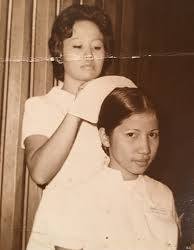
The scapegoating of Filipino nurse immigrants: Filipina Narciso and Lenora Perez are examples of two nurses who were scapegoated.
Filipino nurses with temporary work visas, H-1 visas, were exploited
Mass murder cases involving Filipino nurses included the 1996 Richard Speck massacre. Some of his victims were Filipino nurses and the only survivor was one of these Filipino nurses

The only survivor - Luisa Silverio
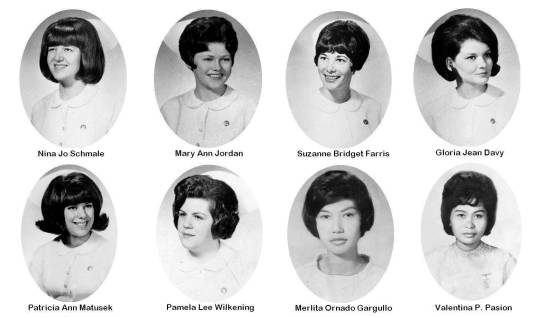
The victims
The 1975 Veterans administration hospital murders that happened in Ann Arbor, Michigan, and involved the previously mentioned nurses Narciso and Perez, bering initially convicted and then later acquitted. They were accused of poisoning and conspiracy
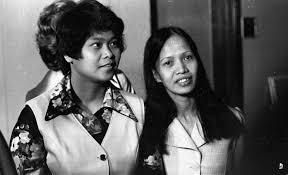
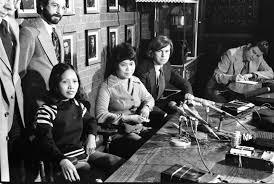
These cases reflect how US imperialism shaped the treatment that was levelled at Filipino nurses
During the late 1970s, Filipino nurse organisations emerged in order to combat the exploitation and discrimination that Filipino nurses faced
There is still a huge gap in the study of Filipino Americans. Quoted from Sucheng Chan's essay on Asian American historiography
"Despite the steady progress in Asian American historical scholarship, significant gaps remain. The most glaring is the absence of book-length studies on Filipino Americans"
American imperialism still shapes the way in which Filipinos - especially Filipino women are perceived
Jesse Ventura, an American politician in his autobiography "I ain't got no time to bleed" reminisces on his days as a Navy Seal stationed in the Philippines.
He talks about being young with a large libido, and how the abundance of Filipino women for him and his comrades to take home relieved that.
He spoke of going through less hurdles when he came to getting a Filipina to sleep with him compared to American women back home. In other words - Filipinas were easy.
This is a reflection of how US imperialism has shaped how the Philippines is viewed.
Filipino women are used in order to portray the Philippines as a feminised, hypersexual, always-willing paradise for the pleasure of Western men.
This depiction of so called "love" between Filipinos and Americans erases the long history of US violence, US domination, the colonial relationship between the US and the Philippines and the history of sexual violence perpetuated against Filipino women. Not to mention the destruction of the environment and spread of disease

US military presence in the Philippines also helped in influencing migration patterns.
By 1970, there were more Filipino men in the US navy than the Philippine navy. This was due to the active recruitment of Filipino men into the US military
Yet another example of how the US imperialist narrative erases truths about history and the lived experiences of Filipinos:
Filipino American organisations had to convince Minnesota legislature to correct a plaque commemorating the Spanish-American war.
The plaque stated that it was honouring the fact that the war was fought to free the Philippines from the tyrannical Spanish
This is unequivocally untrue and rings back to the concepts of American exceptionalism - The US being far more "benevolent" to it's colonies than their European counterparts.
The war was fought in order to defeat the Spanish - not to liberate the Philippines.
The Philippines then fought against the US for independence thereafter
America's so called "forgetfulness" when it comes to Filipino-American history continues to hurt Filipinos.
In particular, Filipino American war Veterans who struggle to fight for their access to veterans benefits.
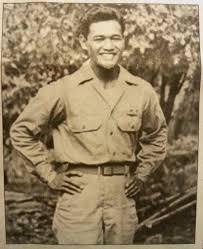

#the philippines#Philippines#Filipino#Filipino history#Philippine history#Pinoy#us imperialism#us colonialism#Us colonisation#U.S imperialism#U.S colonialism#U.S colonisation#American imperialism#American colonialism#American colonisation#Filipino American#Filipino American history#Asian history#South East Asian history#Colonialism#Imperialism#western colonialism#Western imperialism
101 notes
·
View notes
Text

"Accessible and sophisticated. Paligutan’s exploration of the recruitment and experiences of Filipino navy men is an excellent illustration of how economic underdevelopment of the Philippines in the interests of U.S. economic and political gain created the first of many pools of cheap Filipino migrant workers. Paligutan has done a fantastic job of weaving in an intersectional analysis of gender, particularly masculinity, throughout the book."
#uwlibraries#history books#filipino history#american history#military history#labor history#filipino american history
8 notes
·
View notes
Photo

Portrait of Cristeta Pasia Comerford, White House Assistant Chef, 8/30/2002
Comerford became the White House Executive Chef in 2005.
Series: Photographs Related to the George W. Bush Administration, 1/20/2001 - 1/20/2009
Collection: Records of the White House Photo Office (George W. Bush Administration), 1/20/2001 - 1/20/2009
Image description: Cristeta Pasia Comerford stands in the White House kitchen, holding a saucepan. She has a small smile.
29 notes
·
View notes
Photo
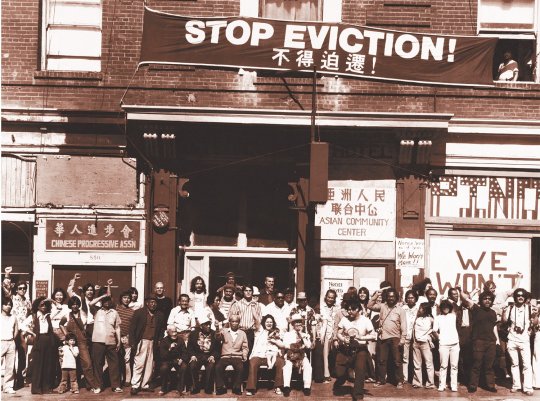
Filipino and Chinese Americans, and other supporters, rally in 1977 at the I-Hotel to stop its shutdown (Photograph by Crystal Huie)
7 notes
·
View notes
Text
Why I Love Writing Plays #25: REPRESENTATION

I proudly wear the Filipino American Playwright Identity because I grew up not seeing a lot of people who looked like me or shared my same background represented anywhere else. I went to a conference while in college called, Know History, Know Self... No History, No Self. And in one of the workshops, the attendees talked about representation in media. Back then, I didn't see many fil-ams on tv as opposed to now. And I think from that workshop, I made it my vow to write more parts for Fil-Am actors to represent the lives of our stories.
Pictured: a short play titled, REMEMBERING THEM, about the power an old barber shop chair to bring back the memories of the manongs who sat in it.
#theatre#filipino american history#history#fil-am#representation#writer#playwright#why-i-love-writing-plays
2 notes
·
View notes
Photo

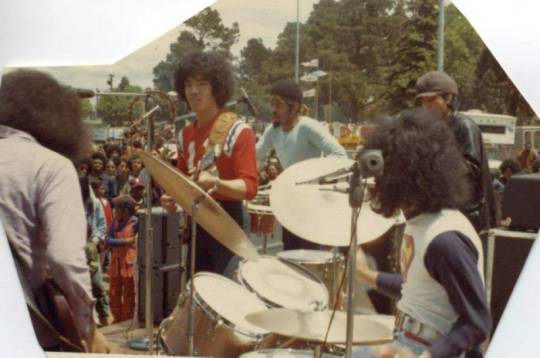
(via How Filipinos in the Mission Recorded the First Asian American Rock Album | KQED)
0 notes
Text
The Smithsonian has formed a task force to address the massive collection of human remains held by its museums, which includes 255 human brains that were removed primarily from dead Black and Indigenous people, as well as other people of color, without the consent or knowledge of their families. The so-called racial brain collection was revealed by a Washington Post investigation. It was mostly collected in the first half of the 20th century at the behest of Ales Hrdlicka, a racist anthropologist who was trying to scientifically prove the superiority of white people.
#anthropology#u.s. history#human remains#repatriation#eugenics#racism#black history#native american history#filipino history#anti indigenous violence#anti black violence#white supremacy
273 notes
·
View notes
Note
Hi, I want to ask if you have any topics about the Philippine-American War? I have gotten myself in Philippine History and I want to know deeper. Thanks:)
I was thinking of many ways on how to answer this because this is such a large and complicated topic but I could just try to summarize some stuff here and tell you what I know and what I could find.
The Filipino-American war mainly started as Filipinos felt betrayed by their former American allies after the country was sold to them by Spain after the Spanish-American war during the Treaty of Paris of 1898 for $20 million alongside other Spanish colonies like Puerto Rico, Guam, and Cuba (American Historical Association, n.d.). This feeling of betrayal had come from the fact that the leader and dictator president of the Filipino revolutionaries, Emilio Aguinaldo of the Kataastaasang Kagalang-galang Katipunan ng mga Anak ng Bayan (en. The Supreme and Honorable Association of the Children of the Nation) or the Katipunan for short, actually sought assistance from the Americans in Hong Kong during the Filipino Revolutionary War against Spain which was happening at the same time (Kedmey, 2013). This is why tensions were so high with the Americans when they first formally colonized the Philippines.
Interestingly, the purchase also included some territories that weren't actually part of Spanish rule such as the Sultanate of Sulu as well as some indigenous territories which led to a strained relationship with the Americans moving forward such as the independent Moros of Muslim Mindanao later being forced to assimilate to the rest of the colony of the Philippines despite previous agreements that state that they will leave them alone, mirroring the way the United States government treated Native Americans (Gowing, 1968).
Fighting between the American army and the Filipino army first broke out when on February 4, 1899 after Private William W. Grayson fired at 4 Filipino soldiers who cocked their rifles in response to them ordering the men to halt which later broke out into the Battle of Manile of 1899 (Chaput, 2012). As the Filipinos and Americans declared war on each other, the Katipuneros resorted to the mountains to start guerilla warfare against the American army (Philippine-American War, n.d.) which then lasted until 1901 when Aguinaldo was captured on March 23, 1901, just a day after Aguinaldo's birthday actually with the capture being attributed to two of his men, Lazaro Segovia and Hilario Tal Placido who betrayed him to the Americans with his other men still being too relaxed from the festivities the day before (Ocampo, 2010).
The fighting continued despite his capture and surrender until the last of the generals, General Macario Sakay, surrendered in July 14, 1906 who was then later executed along side his men on September 13, 1907 despite the initial promise of amnesty by the American government (Pangilinan & Pimintel, 2008).
The war ended the lives of 4,300 American soldiers with only 1,500 having been killed in action with the rest succumbing to diseases, while Filipino forces suffered 20,000 casualties alongside the death of 200,000 Filipino civilians due to hunger, disease, and combat (Philippine-American War, n.d.).
The violence of the situation and especially committed by the American soldiers prompted a lot of protests in the United States to stop the war immediately, as letters of the situation had been sent back to their homes which describes in excruciating detail the war crimes that these soldiers were ordered to commit such as blockading and burning down villages, extreme torture of captured and suspected enemies, and much more. The most well-known of these torture methods that I remember being taught to us in history classes as early as 4th grade was the "Water Cure" where American soldiers would force water down the victim's throat in and force them to vomit it back out. This article has a detailed account of the exact nature of this torture method as it discusses the torture of Mayor Joveniano Ealdama of Igbaras, who, although no American troop was actually hurt in his town, was tortured with his town being burnt down by the Americans the very next day (Vestal, 2017).
I do have to be honest, I was utterly shocked at how little Americans really knew about the Philippine American colonial era and by extension the Philippine-American war especially with the sheer amount of brutality the Americans had done to Filipino locals as well as the large impact the American government and American culture has had in my country and I am glad that more and more people are starting to learn more about this but it's still rather disappointing.
Videos on the Philippine-American War
If you want to learn more about the Philippine-American War, I have a couple of recommendations for videos that you can watch.
This video by Crash Course explains the origins of American Imperial idealization as well as the wars that led up to the colonization of the many territories that America acquired during this time era:
youtube
Here's a good summary by history teacher Mr. Beat of the major aspects of the war as well as the American public's perception of it that you can watch:
youtube
Here's a video made with a Filipino-perspective by Jonas Tayaban on the topic:
youtube
Here's a summary in Tagalog. It doesn't have English subtitles though but it does detail more things about the build-up and the subsequent wars between Spain and America and later the Philippines and Spain and then America too:
youtube
Movies about the Philippine-American War
I would also be remiss to not suggest some historical movies that tackle the events of this time period and especially TBA Studios' Artikulo Uno films Heneral Luna (2015) which focuses on the most popular and effective general of the revolution Gen. Antonio Luna, and Goyo: Ang Batang Heneral (2018) which focuses on Gregorio "Goyo" del Pilar, one the youngest generals of Filipino history who died a very tragic death at a young age:
youtube
You can watch the full movie here complete with English Subtitles
youtube
Another well-known movie about this time period is Viva Films' El Presidente (2012), although I had heard people say it's very much biased to the controversial dictator president Aguinaldo's side with many people citing that as the reason why they don't like the film.
youtube
Here's a reupload of the full-movie. It doesn't have subtitles though.
I don't know of any American-made movies that focuses on this topic and I know there's several other films that focus more on the politics of the Katipunan and the Filipino Revolutionary War against Spain, but not necessarily the Philippine-American War so if anyone has other suggestions, please let me know.
I would also like to suggest documentaries but most of the ones I've seen are on World War II and the others are other YouTube videos by history channels that I'm not too familiar with made by mostly white American YouTubers. Not that that would disqualify their videos (I did reference both John Green and Mr. Beat here) but I don't know these history channels and their hosts enough to recommend them in good faith as of right now.
Books and Further Reading on the Philippine-American War
For books on the subject, I often reference the many writings of Ambeth Ocampo such as his Looking Back series, specifically:
Looking Back 2: Dirty Dancing (Shopee, Lazada, Amazon)
Looking Back 11: Independence x6 (Shopee, Lazada)
Looking Back 13: Guns of the Katipunan (Shopee, Lazada)
I'm also currently interested in buying some other books about the topic like The Hills of Sampaloc: The Opening Actions of the Philippine-American War, February 4-5, 1899 (Shopee, Amazon) but I don't really have any extra money to spare for it right now.
I remember that my father had some other books about this too but the names had escaped me and it's far too much work to try to sort out through his entire book pile in our house.
I hope this answer's comprehensive enough since the subject is, as I said before, quite complex and rather large so I can't really get into all the specifics right now.
References:
American Historical Association. (n.d.). How Did America Enter the Picture?. Retrieved on 3 February 2024, from https://www.historians.org/about-aha-and-membership/aha-history-and-archives/gi-roundtable-series/pamphlets/em-24-what-lies-ahead-for-the-philippines-(1945)/how-did-america-enter-the-picture
Chaput, D. (2012). Private William W Grayson's War in the Philippines, 1899. Retrieved on 3 February 2024, from https://ne-test-site8.cdc.nicusa.com/sites/ne-test-site8.cdc.nicusa.com/files/doc/publications/NH1980GraysonWar1899.pdf
Gowing, P. (1968). Muslim-American Relations in the Philippines, 1899-1929. Retrieved on 3 February 2024, from https://asj.upd.edu.ph/mediabox/archive/ASJ-06-03-1968/gowing-muslim-american%20relations%20in%20the%20philippines%201899-1920.pdf
Kedmey, D. (2013, June 13). Exiled in Hong Kong: Famous Company for Edward Snowden.Time. Retrieved on 3 February 2024, from https://world.time.com/2013/06/15/exiled-in-hong-kong-famous-company-for-edward-snowden/slide/general-emilio-aguinaldo/
Ocampo, A. (2010). Looking Back 2: Dirty Dancing. Anvil Publishing
Pangilinan, F., & Pimintel, A. (2008, September 9). A Resolution Expressing the Sense of the Senate Honoring the Sacrifice of Macario Sakay and all other Filipinos who Gave Up their Lives in the Philippine-American War for our Freedom, Senate Resolution No. 623, 14th Congress of the Republic of the Philippines. Retrieved on 3 February 2024, from http://legacy.senate.gov.ph/lisdata/83927584!.pdf
Philippine-American War. In Britannica. Retrieved on 3 February 2024, from https://www.britannica.com/event/Philippine-American-War
Vestal, A. (2017). The First Wartime Water Torture by Americans. Retrieved on 3 February 2024, from https://digitalcommons.mainelaw.maine.edu/mlr/vol69/iss1/2/
#filipinfodump#filipino history#american history#history#filipino-american history#philippine-american war#military history#colonial history#imperialism#american imperialism#american colonization#american colonial era#philippines#america#filipino#katipunan#us military#president emilio aguinaldo#general antonio luna#general gregorio del pilar#filipino heroes#filipino presidents#john green#crash course history#crash course american history#mr. beat#jonas tayaban#moobly tv#filipino movies#heneral luna (2015)
78 notes
·
View notes
Text

Here’s Eileen, also known as the Sewer Queen!
41 notes
·
View notes
Text
i'm not adding this to the post cuz i dont want to like. yk. but i just remembered that one time someone said filipinos arent asian. of how growing up i never saw and i still don't think i've seen seen characters who Are filipino in the media i consume (granted, my scope is limited but like. come on). i feel like filipinos in the states are only known at large in areas where there are a lot of us, like in california and jersey and washington and florida and hawaii and it's like. being stuck here in Not those places really fucked me up a lot as a kid
#adri.txt#genuinely i thought filipinos just like. were a minority asian american group people didn't know about. until i met people from other place#we just. dont exist outside of those hubs i guess. we're barely a footnote in us history
24 notes
·
View notes
Text
FILAM HISTORY MONTH IS HERE!!! RUN AWAY BEFORE I... I TRANSFOR...!

53 notes
·
View notes
Text
Notes on "Empire of Care : Nursing and Migration in Filipino American History"

Filipino nurse migration to the United States is just one aspect of a larger global flow of predominantly female migrants from the Philippines to over 130 countries.
This migration trend contrasts with early Philippine immigration, which consisted mainly of male labourers to the United States

The migration of highly skilled nurses across borders is both a celebratory sign of their training and expertise but also highlights global power dynamics, where nurses from countries with severe nursing shortages migrate to provide care in highly developed countries like the United States, Canada, and the United Kingdom.
Despite the important role of Filipino nurse migrants, little is known about their development and experiences.
Existing studies often group Filipino nurse migrants with other Asian professional migrants, which masks the unique aspects of their migration.
These studies often explain Filipino nurse migration through U.S. immigration legislation and economic opportunities, such as the 1965 U.S. Immigration Act and nursing shortages after World War II.
The "brain drain" theory is commonly used to explain professional migration from Asian countries, suggesting that professionals leave due to a lack of opportunities and economic incentives in their home countries.
Filipino nurse migrants are sometimes depicted as impersonal objects of study, preventing a comprehensive understanding of their multidimensional roles as historical agents, professionals, women, and immigrants.
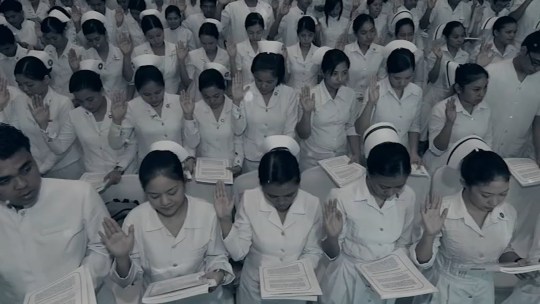
The migration of highly skilled nurses reflects a global power structure where countries with nursing shortages, including the Philippines, send nurses to provide professional nursing care in highly developed countries like the United States, Canada, and the United Kingdom. The World Health Organization (WHO) report highlights the inequitable distribution of nurses worldwide, with developing countries having only 15 percent of the world's nurses despite housing two-thirds of the world's population (Empire of Care).
The culture of migration, shaped by narratives about the promise of immigration to the United States, including media portrayals and experiences shared by Filipino nurse migrants already in the U.S, plays a significant role in motivating Filipino nurses to seek opportunities abroad.
U.S. hospital recruiters actively collaborate with Philippine travel and recruitment agencies to aggressively recruit Filipino nurses, shedding light on what some researchers call the "institutionalisation of migration." However, these aspects are often overlooked in research, leaving a "critical void" in understanding the dynamics of Filipino nurse migration.
The lack of study about the exploitation faced by Filipino nurses from both Philippine and American recruiters and their American hospital employers is concerning. Additionally, the scapegoating of Filipino immigrants during challenging political times and the absence of professional solidarity between Filipino and American nurses remain underexplored issues.
The studies that include Filipino nurse migrants also marginalise and simplify the complex and dynamic history of the colonial relationship between the United States and the Philippines.
Pervasive myths of U.S. exceptionalism and benevolence persist and influence the perception of colonial history, downplaying the violent conquest of the Philippines and the racialized hierarchies it created. These myths are also perpetuated in contemporary times through media narratives about immigration and the incorporation of the "Third World" into the United States.
Despite their highly educated and skilled backgrounds, professional Asian immigrants, including Filipino nurses, still face resentment and hostility, as exemplified by the case of nuclear physicist Wen Ho Lee.

Foreign nurses, especially Filipino nurses, have been criticised for "taking jobs" from American nurses, leading to debates about their immigration and examination requirements. This criticism often overlooks the complex factors involved in Filipino nurse migration and the collaboration between Philippine and U.S. entities in facilitating the process. It also implies that Filipino nurses exploit the United States, rather than the reality of the situation (the United States exploiting Filipino nurses).
The history of U.S. colonialism in the Philippines perpetuated the interrelated myths of "white love" and "little brown brothers." These myths claimed that Americans embraced their colonial subjects with benevolence and enlightened American systems of education, infrastructure, and public health. Not only does this further promote the myths of American benevolence and American exceptionalism , it portrays Americans as superior to their Filipino counterparts in a racialised hierarchy.
American Exceptionalism in this context means Americans juxtaposing themselves against their "Brutal, European counterparts" in order to paint themselves as a benevolent force in the Philippines.
#Empire of care#Philippines#the philippines#Filipino history#filipino american#Pinoy#Filipino#Filipina#us colonialism#us imperialism#US exceptionalism#Colonialism#Colonial history#History#Asian history#American history#Books#My books#Personal#🇵🇭#Swagapino#I shuddered upon typing “little brown brothers” and “white love” LMAOOO#Started this last night and finished it like 10 mins ago#I also laughed upon reading that American nurse complaining about Filipino nurses implying that Filipinas were exploiting the US#The audacity
92 notes
·
View notes
Text
October was chosen to commemorate the arrival of the first Filipinos who landed in what is now Morro Bay, California on October 18, 1587. It is also the birth month of Filipino American labor leader Larry Itliong.
In California and Hawaii, where many Filipino Americans reside, Filipino American History Month is widely celebrated. Many Filipino American organizations in these states often initiate their own independent celebrations. 2006 was a pivotal year as it marked the centennial celebration of Filipino migration to the United States.
While some used the term Filipino American Heritage Month interchangeably with Filipino American History Month, FANHS cites that the month should be properly focused on "history" instead of "heritage." Whereas history includes the events, experiences, and lives of people and their impact on society, "heritage" is solely about cultural traditions handed down from the past.
Happy Filipino American History Month 🇵🇭
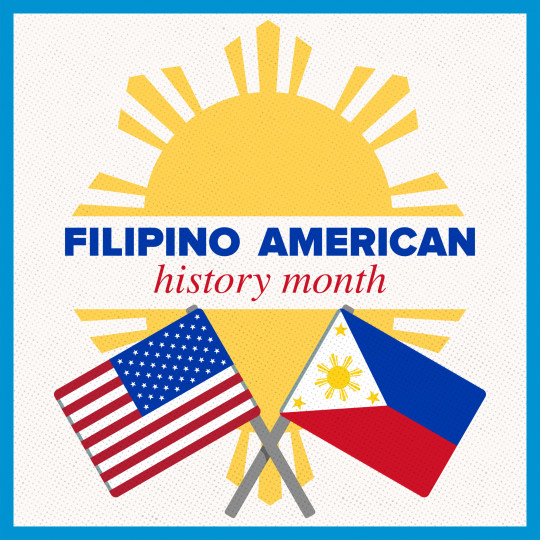



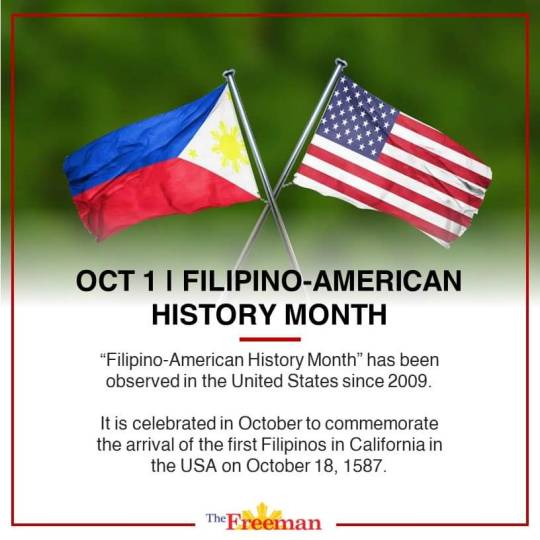
#FilipinoAmericanHistoryMonth #FAHM #Phillippines #FilipinoLife
26 notes
·
View notes
Text

thank you to everyone who helped fund our graphic novel within 6 hours of launch!!! believe the hype, and get your clover press x kwento comics's THE MASK OF HALIYA graphic novel on kickstarter for filipino american history month!
im currently working on penciling issue 6 with an awesome lineartist, colorist, and letterer team, and i hope all y'all new and returning readers will love it
#kickstarter comics#filipino american history month#filipino mythology#indie comics#comic book art#comic book artist#women in comics#clover press#kwento comics#the mask of haliya#comics#comic books
27 notes
·
View notes
Text



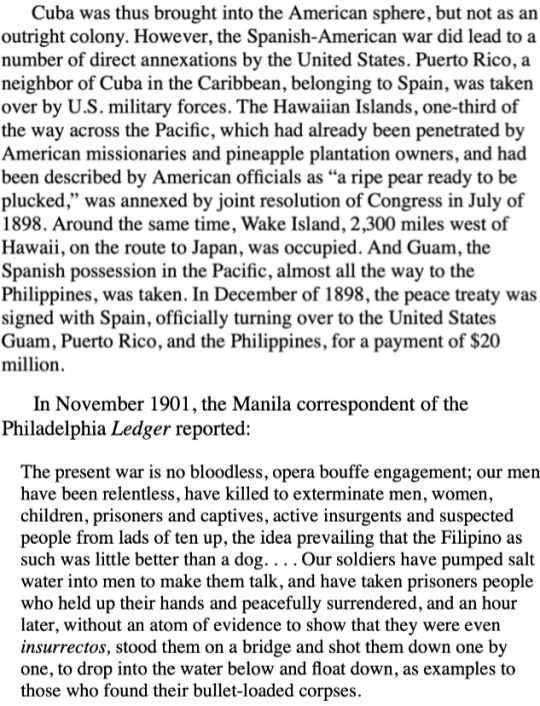

Howard Zinn, A People’s History of the United States
#howard zinn#history#american#1900s#1890s#victorian#edwardian#cuban#filipino#imperialism#colonialism#20th century
7 notes
·
View notes
Text
The Importance of Filipino Stories: Celebrating Filipino American History Month

October is Filipino American History Month. With more than 4.2 million individuals of Filipino descent here in the U.S., we know there are at least 4.2 million stories to cherish and celebrate! Today’s story comes from Josie Gepulle, our fall 2022 Editorial intern and proud Filipino American.
It wasn’t until I was in my second year of college that I got my first reading assignment on Filipino American stories.
At my university, I was taking a history course entitled “American Radicals and Reformers.” Halfway through the semester, I learned about Larry Itilong, a Filipino migrant laborer who went on to lead the five-year Delano Grape Strike in California and later co-founded the United Farm Workers of America.
I’m pretty sure my jaw actually dropped hearing about this. An actual Filipino American made his way into the history books, one who had a profound impact on the labor movement.
That’s also when it really hit me: there was a lack of Filipino stories in my life.
I grew up in a small suburban Texas town. I was the first and only Filipino my community saw, so I don’t really blame anyone for their ignorance. It was frustrating, however, to receive several comments like, “Are you sure you’re Asian? You don’t look like it at all.” or “Where is the Philippines anyway?” I didn’t understand at that time because I’m proud of my heritage, but what does that mean to a world that doesn’t even know you exist? The most recognition I’ve gotten is from veterans recalling war buddies or travelers who visited Manila once.
I learned the history of the Philippines from my dad, not school. The Philippines, it seems, had no place in the story of America, despite being one of its former colonies. Even the mainstream media barely acknowledged our culture and our community. Any reference to the Philippines seemed to only refer to Manila and how the language was Tagalog. I couldn’t relate to that. My parents are from Bacolod, a city in central Philippines, where the community spoke Illongo. The narrative America wanted to tell about the Philippines, as limited as it was, was not one I could fit into.
It took me a long time to identify as a Pinoy writer. That same year at college when I learned about Larry Itliong, I attended a special event where I heard Jose Antonio Vargas, the famed journalist and immigration rights activist, and openly undocumented Filipino American, give a talk about his book, Dear America: Notes from an Undocumented Citizen. He, too, was a storyteller and writer, just like I wanted to be.
I finally realized I wasn’t alone. I didn’t need to be the author who put the Philippines in the history book. Several writers already did that for me. Carlos Bulosan wrote the famous America Is in the Heart, establishing the Filipino American perspective in literature. Then there are the writers of today, like Elaine Castillo with her book America Is Not the Heart, a clear callback to Bulosan. While Filipino Americans may have different interpretations of their identities, these stories are very much in dialogue with each other.
Each story, including mine, is only a small piece in a much larger puzzle. My own perspective that only represents a tiny fraction of Filipino history. The Philippines is made up of 7000+ islands and has 120+ spoken languages. We have our own history and mythology that existed long before the Americans came and long before the first colonizers, the Spaniards, arrived as well. While colonialism has tried time and time again to erase our stories, remembering our traditions and history is how they live on. We don’t want these stories to become forgotten simply because they’re left out of school curriculums.
However, I do have to take a moment to be grateful for virtual spaces, especially those for writers. While my family is no longer the only Filipino family in my city, it was online where I met my very first Pinoy friends. Together, we traded experiences, laughing at the little tics that our families share. That, too, is an important part of the story. My friends and I aren’t famous, but aren’t those cherished moments together part of our experience as well?
And well, NaNoWriMo is the perfect time to explore your own stories, isn’t it? I remember being drawn to the challenge a long time ago, when I was a tiny middle schooler who felt so lonely in the giant world. NaNo made me believe that my story truly mattered, not just to everyone in the Philippines and America, but to me, the person who all my writing is eventually for. There’s no way I, or anyone for that matter, can accurately describe the story of every single Filipino, let alone Filipino American, out there. But you can talk about your story. Personally, I want to write characters who speak Ilonggo or grew up the only Filipino in their class. Maybe your characters will speak Cebuano or Ilocano. No matter what, Pinoys will get to be main characters! They’ll have grand adventures or share quiet moments with their loved ones. We’ll share our culture, our heritage with the world.
Together, our story will be told. Dungan ta sulat!

Josie Gepulle is a longtime NaNoWriMo fan, spending her teenage years lurking on the YWP forums and procrastinating her novel writing. She loves hearing the unique stories that come from writers all over the world and believes every voice is worth listening to. She enjoys the many different forms storytelling comes in, doing everything from analyzing TV shows to drawing her favorite characters. She can be found scribbling notes or doodling with an array of pens by her side.
If you’d like to learn more about Filipino American History Month, here are some more sites to explore.
10 Ways to Celebrate Filipino American History Month
National Today
Filipino American National Historical Society
FAHM Resources and Creators to learn from (IG Post)
#nanowrimo#writing#amwriting#filipino american history month#inspiration#by nano intern#josie gepulle#motivation
100 notes
·
View notes